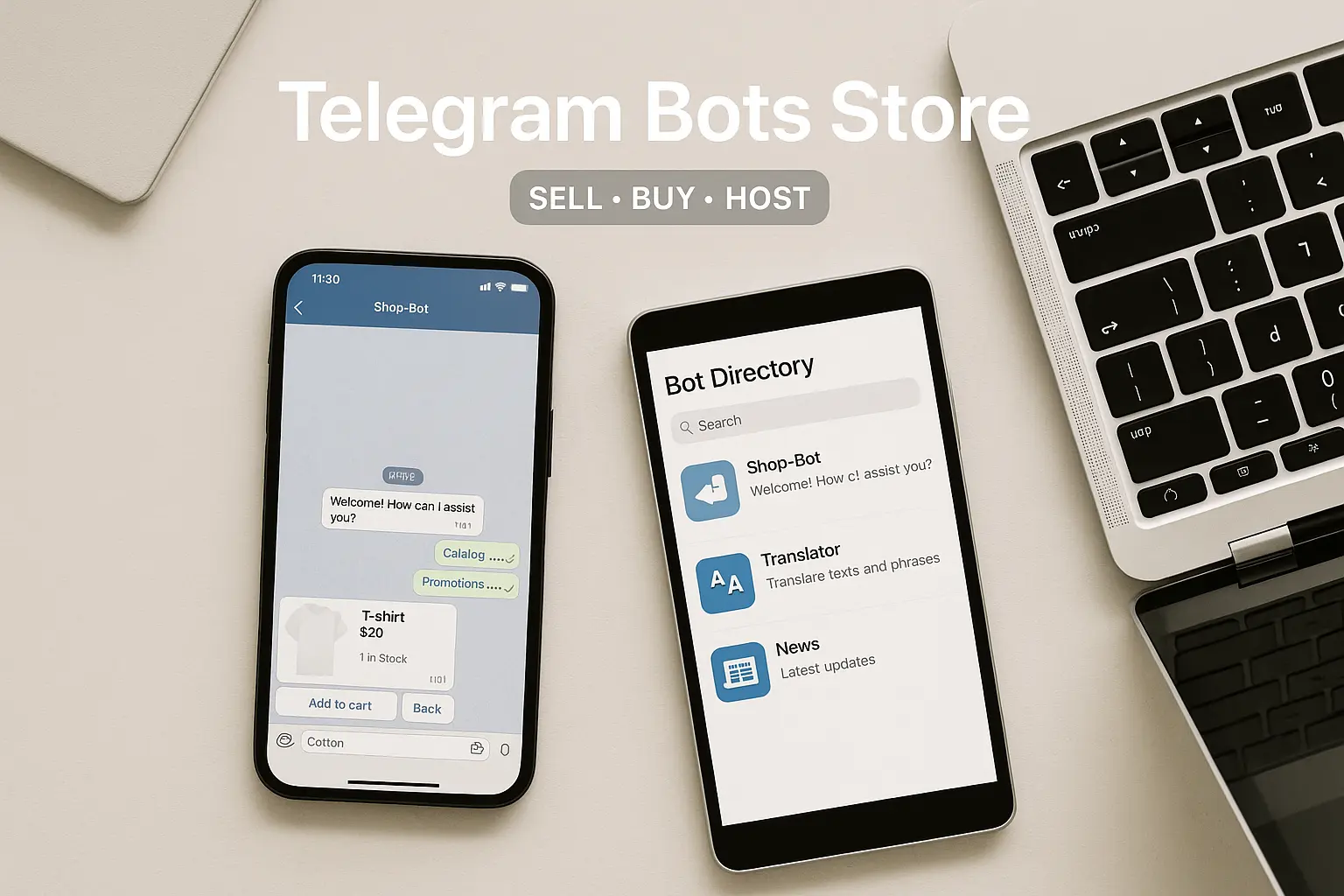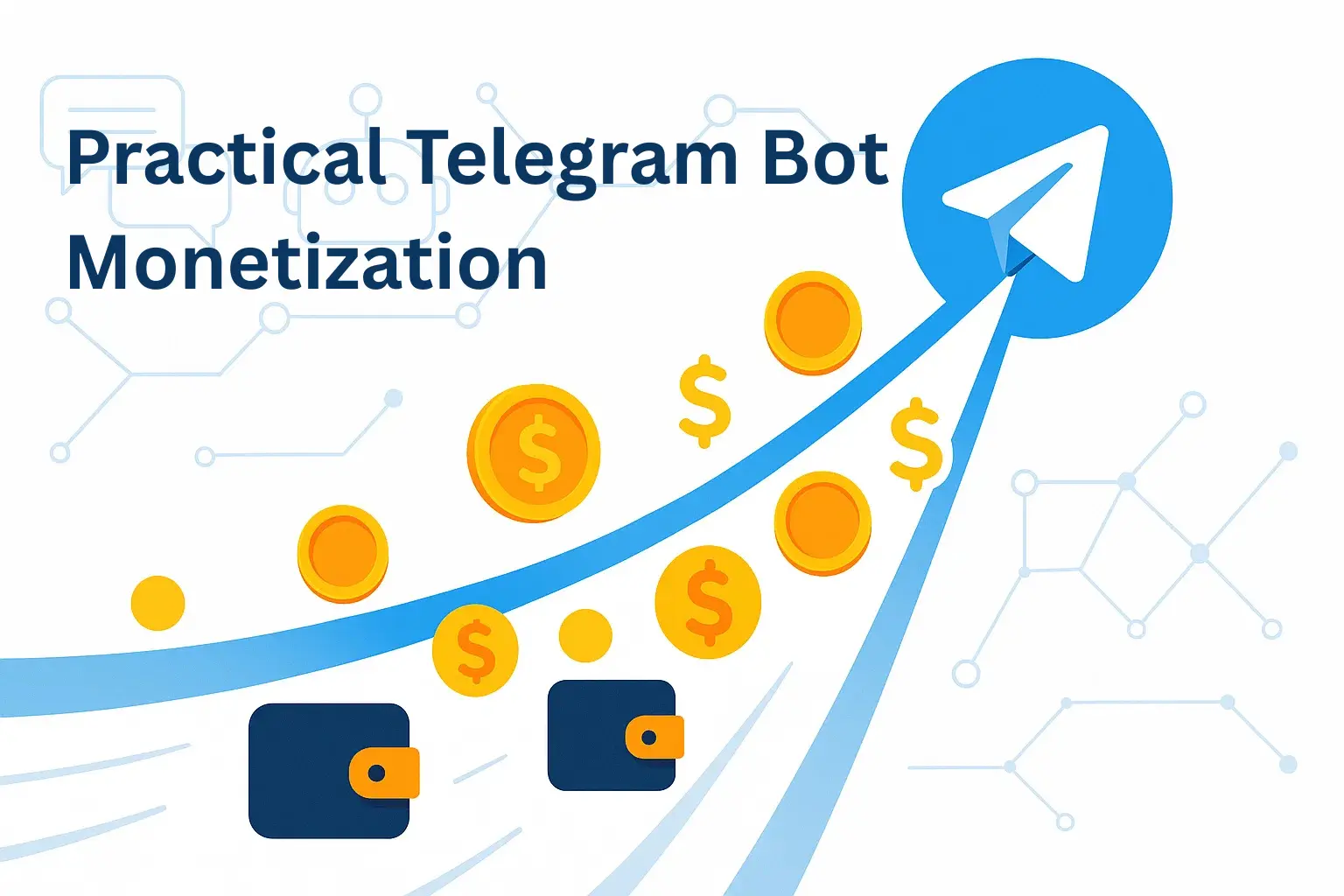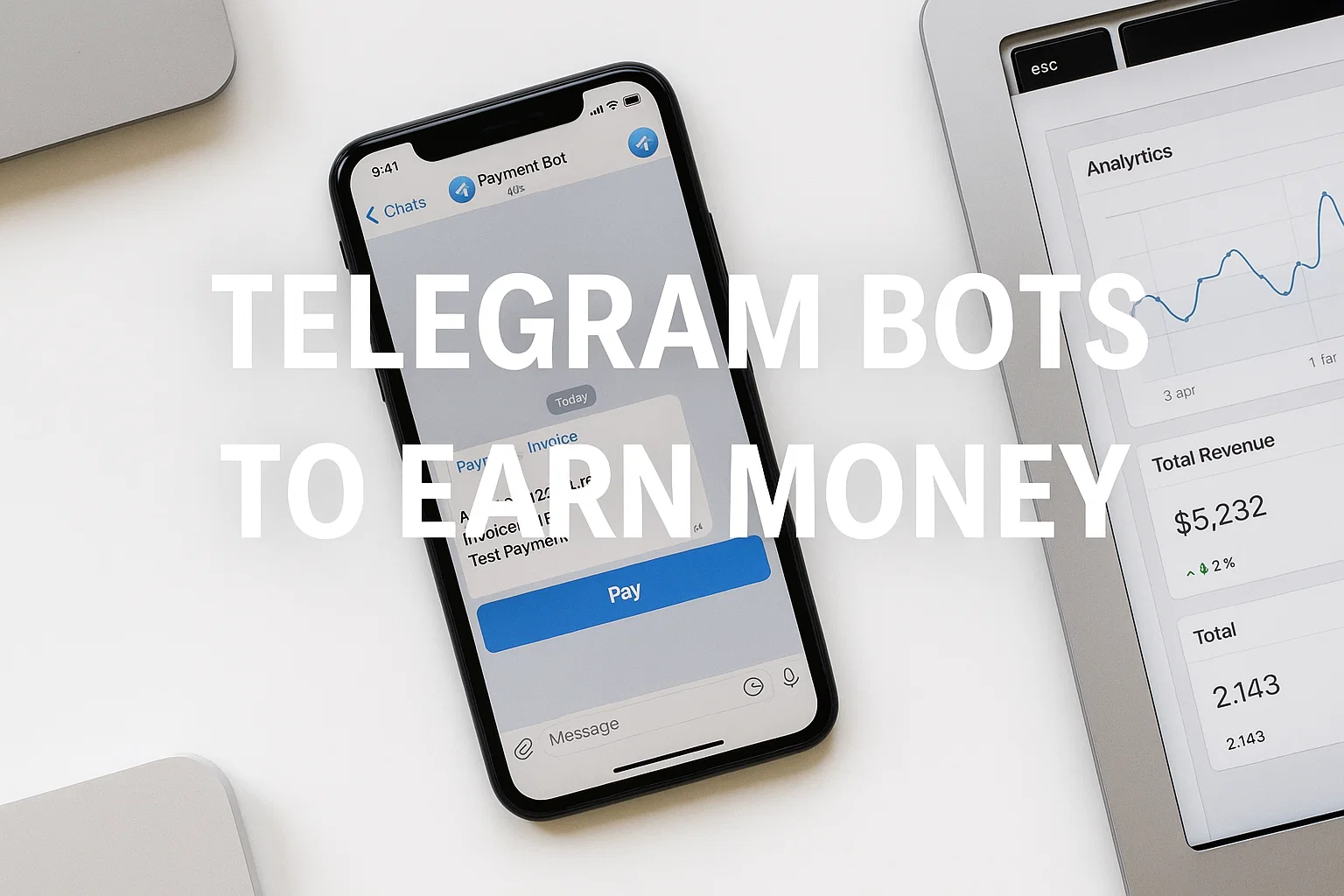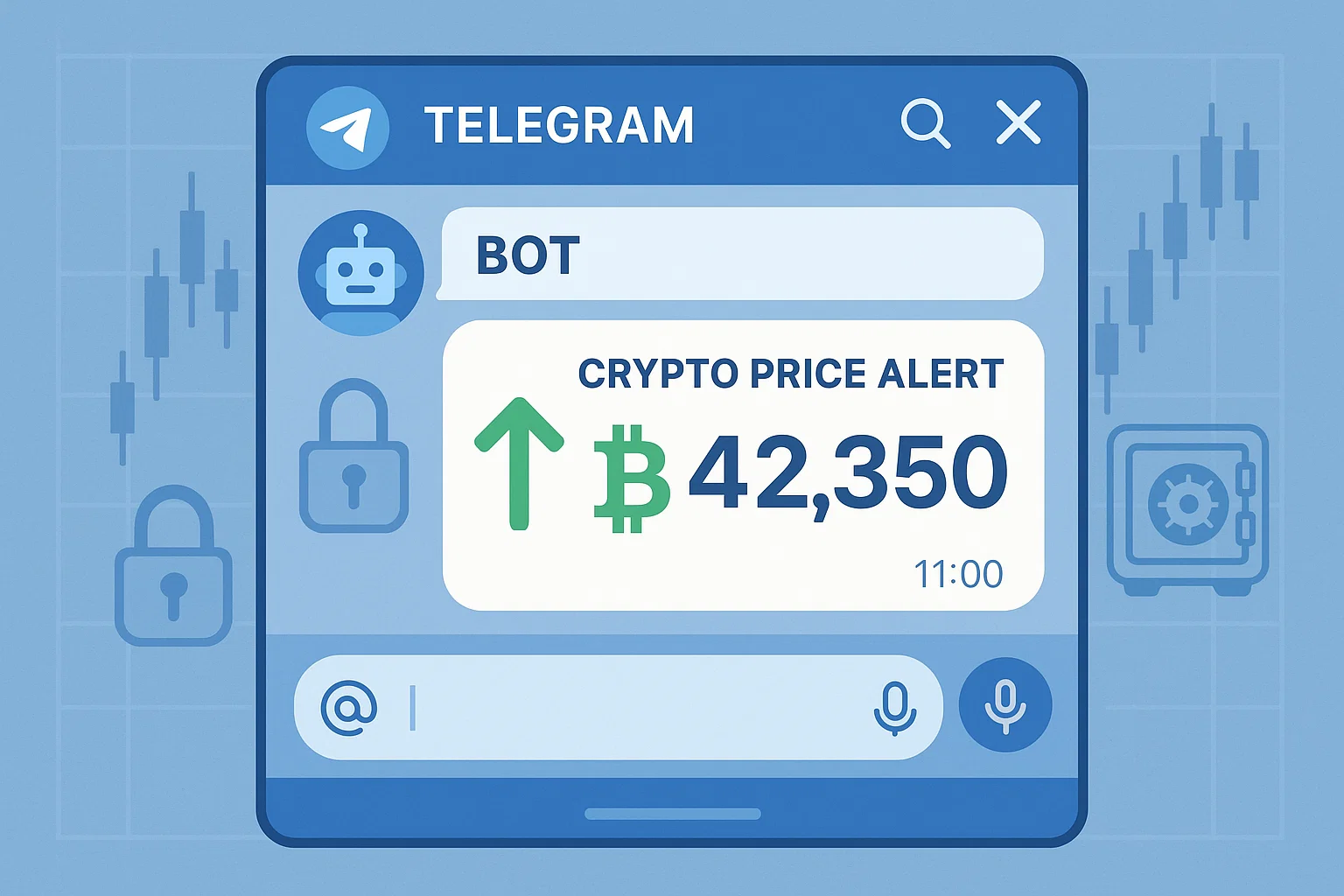If you sell bots, run a Telegram channel, or just want a quick storefront to sell digital tools and services, a Telegram bots store can be a tiny money machine — or a huge time-sink if you wing it. This guide gives you the full map: where people find and buy bots, how to list one, what to check before you buy, safety gotchas, and realistic ways to monetize a listing or a full bot shop.
I’ll keep it practical and human: short checklists, examples you can copy, and actual places to start listing or shopping today.
“A Telegram bots store is less about flashy pages and more about trust, clarity, and a smooth install flow.”
— someone who’s bought and sold way too many bots
What exactly is a “Telegram bots store”?
A “Telegram bots store” can mean a few things in practice:
- A searchable directory or marketplace where developers list bots for discovery (think: StoreBot-type directories). StoreBot
- A hosted bot you install in Telegram that is a shop — customers interact with the bot to browse and buy digital goods. There are free/open-source shop bots and paid platforms that do this. GitHub+1
- A commercial marketplace that bundles professional bot development + ready-to-deploy bot code. BotInspire
Each format has trade-offs. Directories are discovery-first. Shop-bots let you transact inside Telegram (no external checkout). Marketplaces can offer vetted listings — but they often take fees or host premium bots.
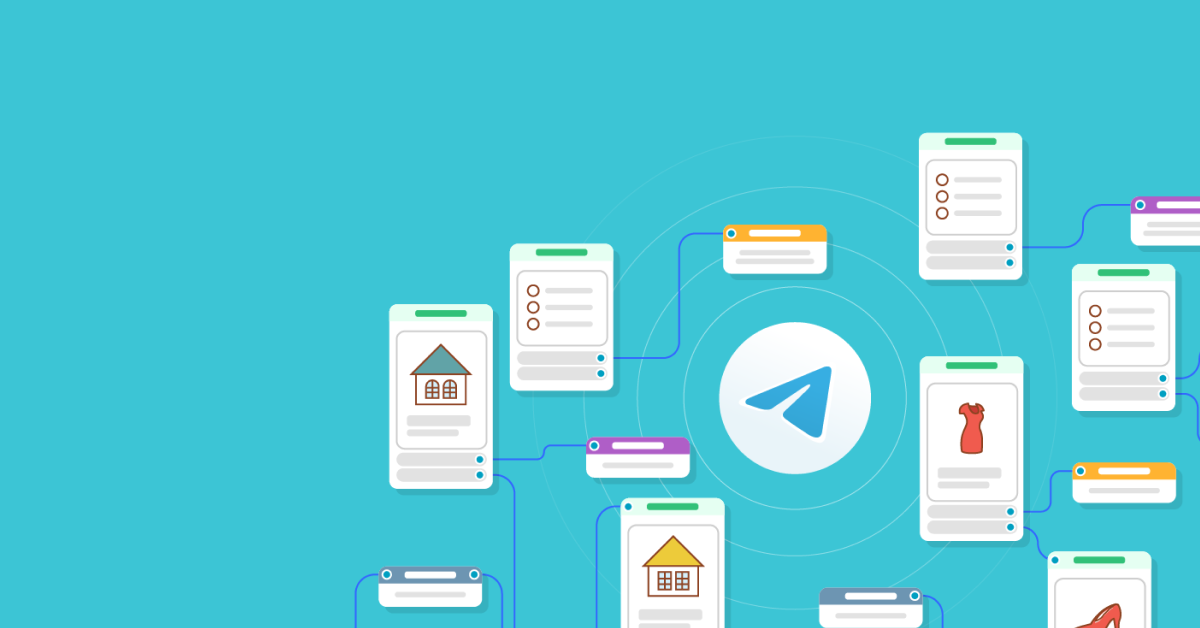
Where people actually find Telegram bots
There are several discovery layers:
- Directory/index bots — StoreBot and similar directories let users search by category and popularity. They’re the first stop for people who don’t know which bot they need. StoreBot
- Marketplaces and boutiques — places that sell production-ready bots or managed services. These can be curated and sometimes provide onboarding support. BotInspire
- No-code / commerce platforms — platforms that offer a “store bot” you can install and configure to sell items or subscriptions inside Telegram. They focus on ease-of-use and payment integrations. InviteMember
- Open-source repos and DIY — GitHub projects and community repos where devs share store bot templates you can self-host. Great for control, less great for plug-and-play convenience. GitHub
If you’re a buyer: start at directories to learn what’s popular, then move to marketplaces or developers for paid/custom work. If you’re a seller: decide whether you want discovery (list on directories), commerce (use a store bot or marketplace), or both.
Types of Telegram bot stores (pick one or combine)
Directory listing
Best if you want visibility and discovery. You get a “card” people can click into; the buyer usually follows to your bot or website.
Inline commerce bot
A bot that is the shop. Customers browse and check out inside Telegram using payments or external links. Great for digital goods (bot licenses, e-books, subscriptions).
Third-party marketplace
You list a ready-made bot and the marketplace handles payment, maybe hosting and support. Good for devs who want customers without building a storefront.
White-label / agency storefront
If you provide bot development services, your “store” can be a landing + demo bots + pricing cards. This is more hands-on but scales into contracts.
How to list a bot in a directory or marketplace (step-by-step)
- Get your bot ready — stable commands, clear /start flow, descriptive about text, and a demo account or screenshots.
- Prepare marketing copy — short one-liner, 3–5 feature bullets, and clear pricing or license model. Buyers want to know “what problem does this solve?” in one line.
- Secure legal basics — license file (MIT? proprietary?), refund policy, and privacy statement if you store data.
- Choose where to list — big directories first (for discovery), then marketplaces for commercial reach. StoreBot+1
- Add screenshots & demo flows — show the /start sequence, purchase flow, and admin/dashboard views. Visuals reduce support friction.
- Link docs & support — a short guide and a support/contact method reduces refunds and angry messages.
- Promote — post in relevant Telegram channels, Twitter/X, Hacker News, or community forums; encourage early users to leave ratings.
“Clarity sells: a user should understand what the bot does in 5 seconds and how to try it in 30.”
— small but mighty advice for listings
Pricing & monetization models that actually work
- One-time license — buyer pays once for the bot source or pre-built package. Simple, familiar.
- SaaS / hosting fee — you host the bot and charge monthly for uptime, updates, and support. Predictable revenue.
- Freemium + paid features — free core bot, paid advanced modules unlocked by license or token. Great for volume.
- Pay-per-use or tokenized actions — users buy credits to run certain bot features (common in image/AI bots). Keep an eye on abuse.
- Marketplace commission — if you sell via a marketplace, they may take a cut — price accordingly. BotInspire
If your bot performs an ongoing, measurable job (moderation, analytics, subscription content), SaaS pricing usually yields higher lifetime value than one-off sales.
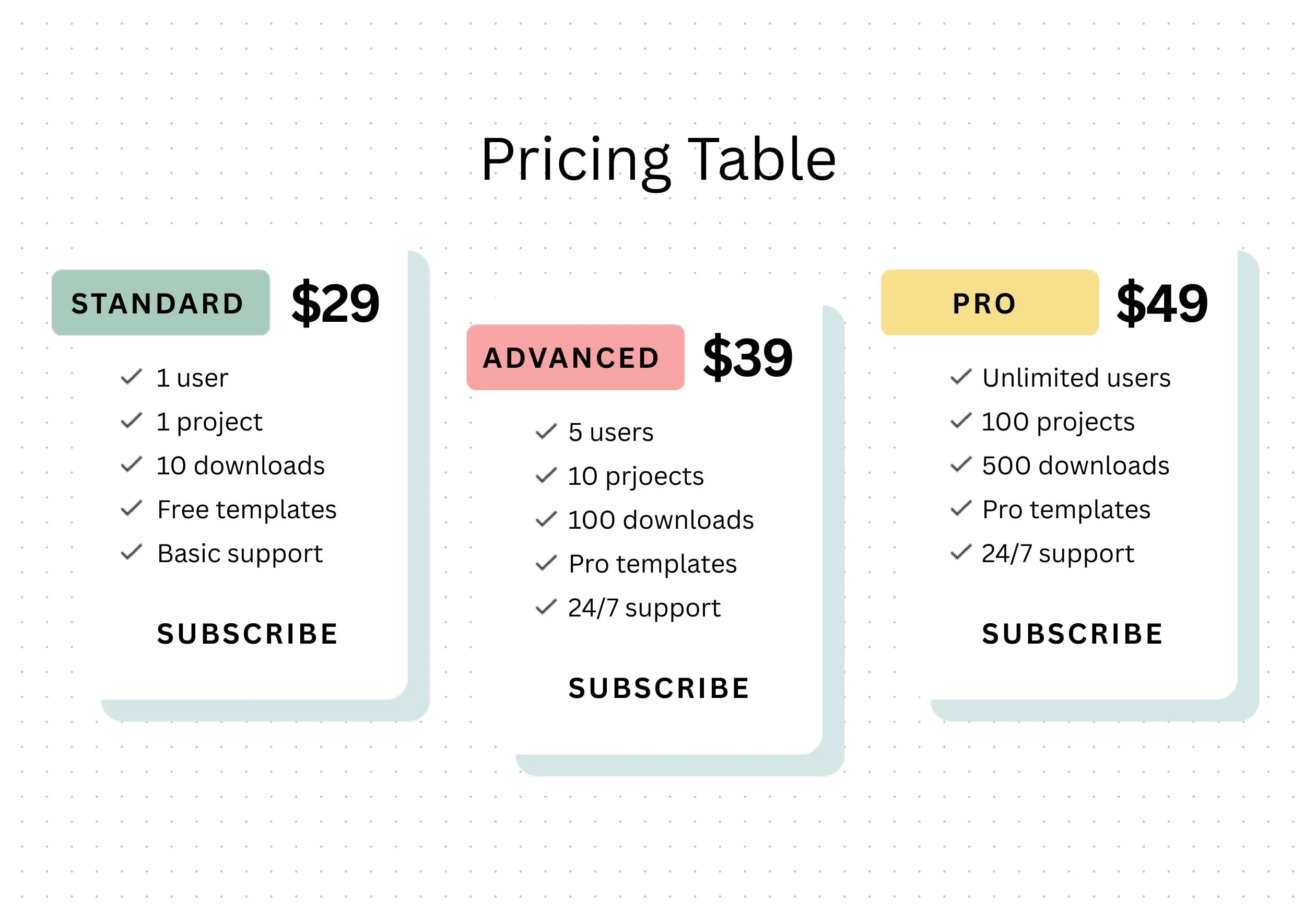
Safety, moderation, and legal red flags
Telegram is powerful, but not lawless. There are big risks to watch for:
- Illicit content & copyright — bots that distribute pirated media or automate illegal downloads have led to takedowns and legal pressure. Be cautious when listing or buying bots that touch copyrighted material. Diario AS
- Abusive / harmful AI bots — some bots (deepfake image tools, "nudify" services) are actively flagged and removed; platforms and press have covered harms linked to these services. If your bot’s use-case can be abused, add clear rules and safeguards. WIRED
- Data privacy — if you collect user data, be explicit about storage, retention, and export options. Buyers often ask this.
- Payment & refunds — clear terms reduce disputes; if you accept crypto, be explicit about reversible vs irreversible payments.
- Bot token security — never publish your bot token. If a buyer gets code with an embedded token, regenerate and advise immediately.
Simply put: don’t list anything that would cause you or your marketplace to get DMCA requests, legal threats, or public backlash.
Tools & platforms to build or sell a Telegram bots store
- Directories & discovery: StoreBot and similar directories help users find bots by category. StoreBot
- Marketplace platforms: There are niche marketplaces that sell ready bots or managed services for Telegram. Vet them for fees and support rules. BotInspire
- Commerce / membership bots: Platforms exist to run paid channels and subscriptions via bots — useful if you want to sell access or recurring content inside Telegram. InviteMember
- Open-source templates: GitHub hosts store-bot templates you can fork and adapt if you want a self-hosted starting point. GitHub
Combine these: list in directories, use a commerce bot for sales, and keep a GitHub repo or marketplace listing for developers who want the code.
Quick checklist: should you buy or build?
- Buy if: you need to ship in days, don’t want hosting headaches, and can tolerate a marketplace fee.
- Build if: you need custom integrations, strict privacy, or a unique UX.
- Hybrid: buy a base and customize — faster than building from zero, cheaper than full custom dev.
Examples of launch flows (copy-ready)
For sellers (fast onboarding):
- Post listing on StoreBot + marketplace. StoreBot+1
- Offer a 7-day demo token.
- Provide a one-click install link and a short /start quick-guide.
- Offer support via a dedicated Telegram channel or email.
For buyers (quick test):
- Try demo: follow /start, test core commands, and check admin/dashboard.
- Confirm permissions and data policy.
- If it’s hosted, ask about uptime SLA and backups.
- Check the code (if buying source) or ask for a staging demo.
“A smooth first-minute experience is 80% of whether someone keeps a bot or asks for a refund.”
— truth from the trenches
Final thoughts — play the long game
A Telegram bots store can be a reliable revenue stream if you treat listing and sales like product management — think onboarding, support, pricing, and trust. Directories get you noticed; marketplaces get you customers; shop-bots get you revenue inside the app. Combine them and you’ve got multiple discovery + conversion paths.
If you want help picking the exact marketplace or building a one-click demo flow for a listing, tell me: do you want to sell hosted access, a one-time license, or both? I’ll give you a copy-ready listing (title, 5 bullets, screenshots to include) and a one-minute demo script you can use in your /start message.
